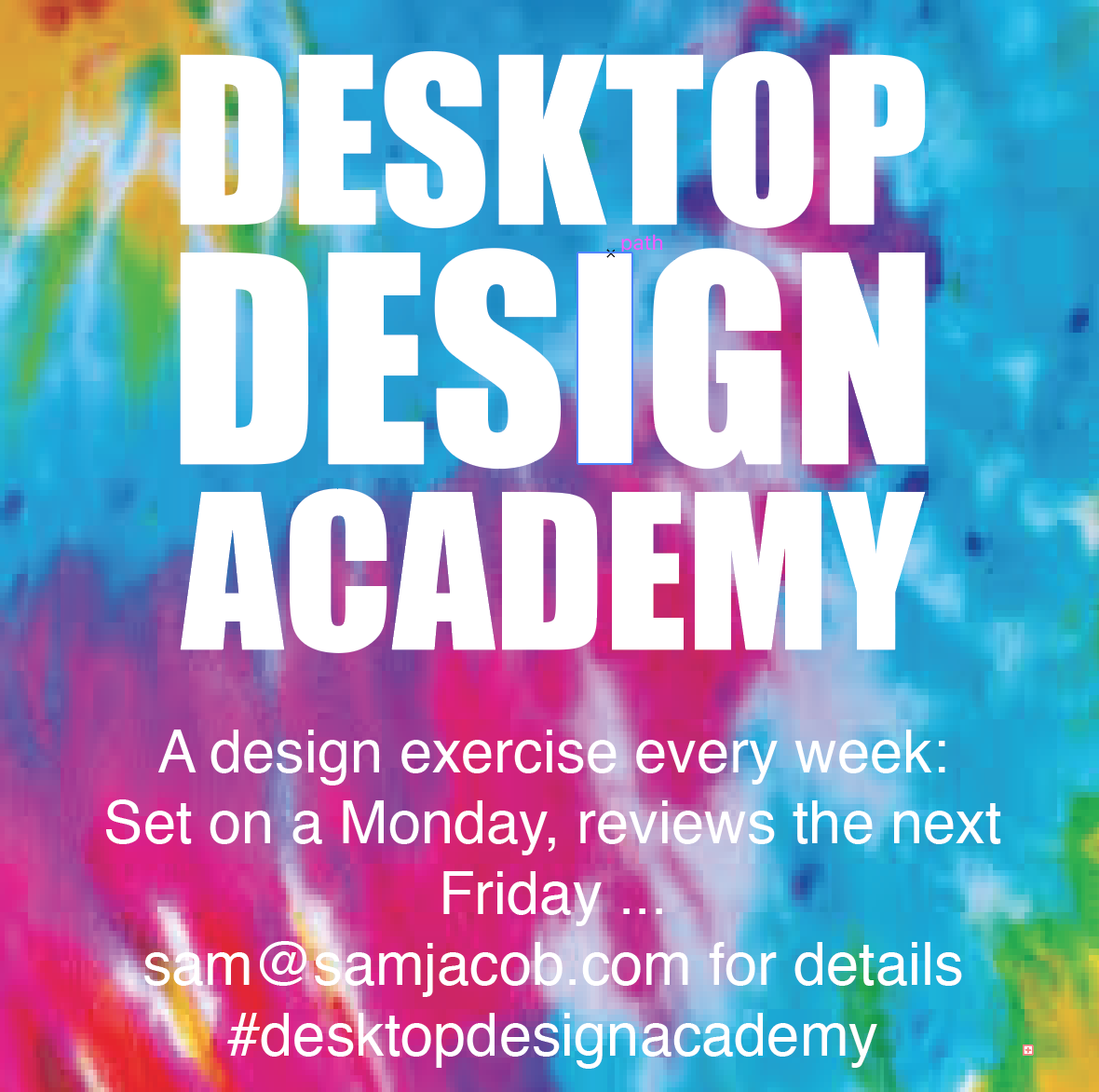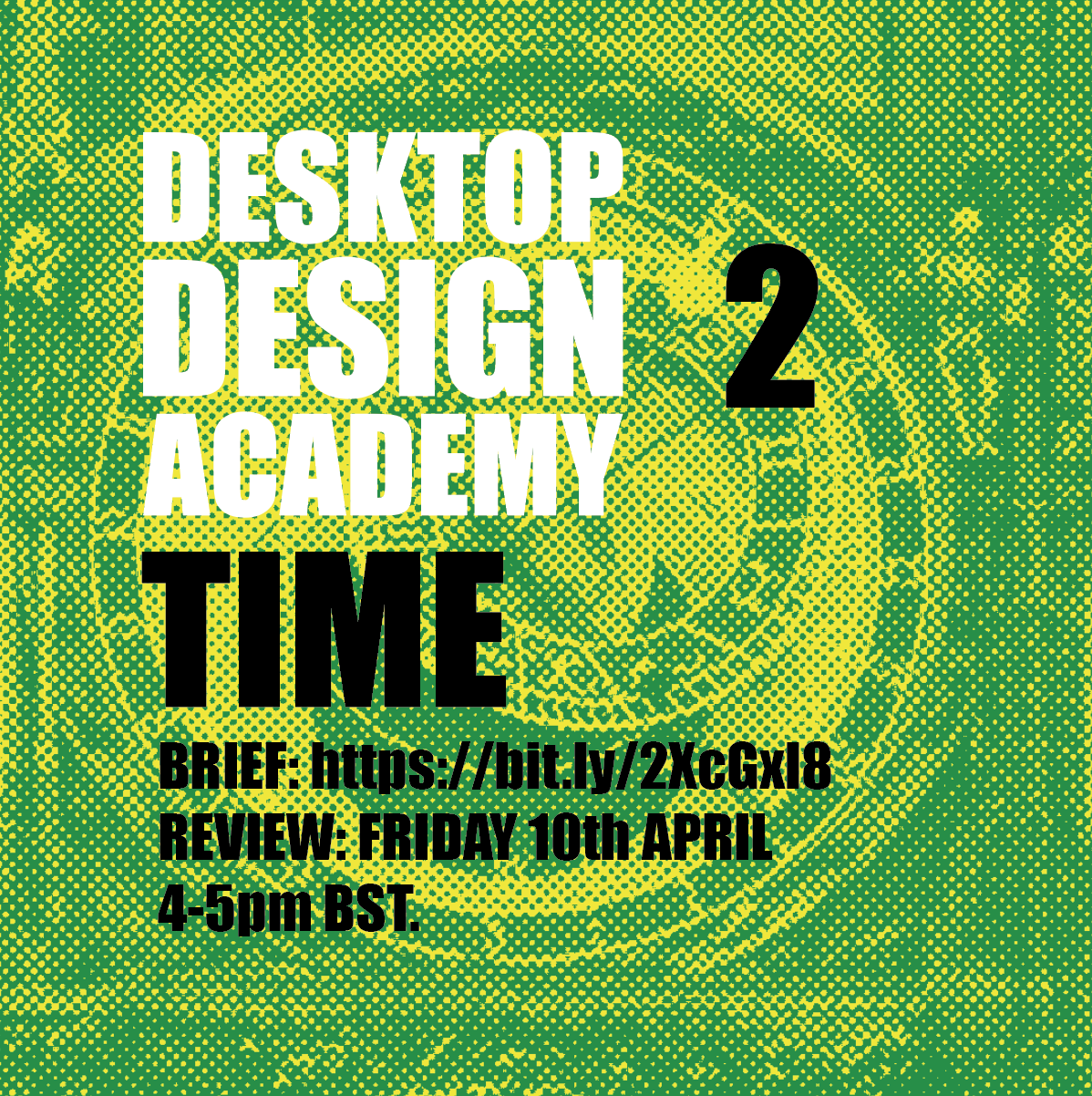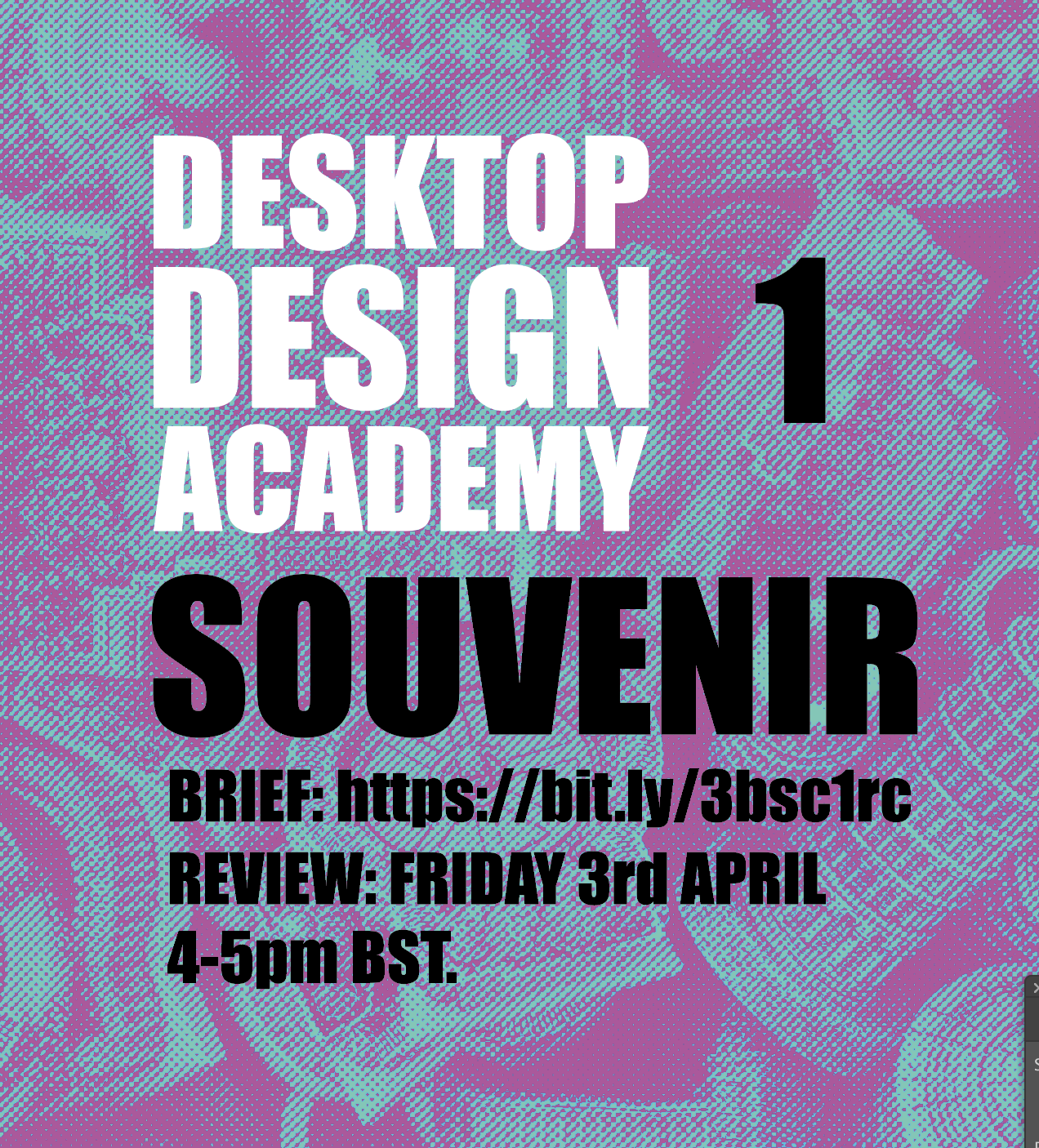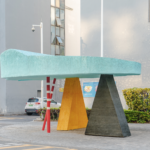


Desktop Design Academy
#DesktopDesignAcademy
What is the Desktop Design Academy?
This, like so much else of the present moment, is an experiment. It’s an experiment in how we can have conversations about the designed world. And how we can have those conversations through acts of design.
Who is the Desktop Design Academy?
Anyone can participate! You might be a family, a child, a teenager, a design student or not a design student, a professional, someone who always fancied a go at it. You might even be a famous designer wanting to experiment and have some fun. Design is for everyone and can be by anyone too. Everyone is welcome!
How does the Desktop Design Academy work?
It’s very simple! Every week on a Monday we’ll send out – via email and social media – a short brief. This will set out the week’s exercise, and then on Friday at around 4pm GMT, we’ll get together on Zoom to share and talk about all the different things we’ve done. We’ll invite some people along to help us have a discussion, and hopefully we can learn, entertain and support each other.
We’ll try and make it so that you can show your work, or just watch if you’d prefer and hopefully record it in some way. We’ll have more details in the brief for the first exercise!
What Do you Need To Do?
These are exercises, they don’t rely on amazing skills, deep experience, or difficult techniques. They can be quick, rough ideas, made easily with whatever you might have to hand – sketches on scraps of paper, models on your dining table, whatever is to hand! There is no right or wrong, everything is ok and allowed! You might spend 5 minutes, 5 hours, 5 days – whatever you want to do!
Why is the Desktop Design Academy?
For now, at least, the studio, the office, the academy have all decamped to the home. The professional world is now mixed up with bath time and bedtime stories. Can we take advantage of this moment? After all, the traditional distinctions between work and play, between colleagues and family, public and private were only ever arbitrary ideological ideas. If design is about the creation of the worlds we inhabit, then maybe our current unusual context is a good place to think about certain kinds of things?
Brief 1: Souvenir
Issued 30th March 2020
Review: 3rd April 2020, 4pm BST
#DDASouvenir
Introduction:
Often, when we go somewhere – especially when we go somewhere particularly nice – we get ourselves a souvenir. Maybe a fridge magnet, maybe a snow globe, maybe just a stone from the beach or a matchbox from a bar. Back home we arrange our souvenirs so that your fridge, mantle piece or shelf become a miniature museum of the places you’ve been.
A souvenir is something to help us remember, part of the rituals of traveling, visiting, and returning. Which of course are things we can’t do for a while.
So with that in mind the first Desktop Design Academy assignment is as follows:
Task:
The task is simple!
You are to design a souvenir. Below are some starting points that might help give you a direction. But you might also have your own!
- If souvenirs are usually associated with travel, what might a souvenir of non-travel be? Say a souvenir of where you are now? Of your home rather than somewhere exotic? Of the journey around your room?
- It might be a souvenir of something that souvenirs often don’t usually celebrate – so rather than a place maybe something less physical like an idea? A feeling? A dream?
- Souvenirs are often quite generic (the most famous things about a place). What if they were souvenirs that commemorate more obscure, personal or mysterious subjects?
- Souvenirs sometimes also have uses, pencil sharpeners, clocks, plates. Will yours also have a use? If so, what might that be? Would souvenir hoovers work? Or souvenir chairs? What does it mean for a thing to be both a reminder, a memory and something useful?
How will you make your souvenir? You might decide that drawing is a good way to show it. You might also try to make it with whatever materials you might have. You could stick different things together, collage images or assemble things in real life … Feel free to go as wild as you like!
Brief 2: Time
Issued 6th April 2020
Review: 10th April 2020, 4pm BST
#DDATime
Normally our lives are given a rhythm by time. Or rather a certain idea of time. Meals at certain moments, school and work that starts and ends at another. This kind of time is far from natural. It is a designed thing and has not always been the same. Indeed we could understand time though the many different kinds of time we inhabit simultaneously – human, cosmic, geological,
‘Human’ time originally came from the sun. Devices like sundials were developed first for religion and the military to control times of worship and the organisation of battles. It was important for agriculture to manage crops. Later, industrialisation meant time was used to organise labour created. Railways too meant synchronisation of time between districts and cities. Sleep used to be organised differently for example, in short bursts between activities rather than one long session.
So many things we take for granted as part of our ‘normal’ lives – weekends, holidays, working hours, mealtimes, sleep patterns are a product of a 21st century conception of time. If that form of time is, at root, an idea of how the world should be organised, it contains ideas about work, leisure, efficiency, division of life into discrete elements. Time is in this sense a political idea.
Now however, time seems to have changed. It feels different. What day is it we ask ourselves? Are you at work or school or home? When should you get up, when and what should you eat? What kind of time – or times – is now?
So many designers have designed clocks – how might we add to that tradition in ways that help us think about what time is or might be?
So with that in mind the second Desktop Design Academy assignment is as follows:
Task: To design something to do with time (a clock, a calendar, a diary, a way of marking time, rituals, or time itself)
There are different ways we could approach this:
- Time Pieces. There is a long tradition of designed things that mark time. Not only different technologies of clock, but also what clocks ‘celebrate’. From astrological clocks to exceptionally ornate baroque clocks, to carriage clocks or cuckoo clocks, the narrative of the clock itself add layers of meaning to the idea of time. What might that approach mean now?
- We design things that help us organise and record time – things like calendars, diaries. What might they be like now?
- Timetables – from train timetables via TV schedules to ancient annual rituals – are expressions of the significances of time. What would this kind of timetable now include?
- Measuring and marking the passage of Time – how might we mark time? Is it though the performance of a particular ritual? Is it though a symbolic act? What would that connect with? Is time something you do? Or a thing you participate in?
Review:
We will have a collective get together on Zoom at from 4-5pm BST / GMT+1 on Friday 10th April.
(That’s 10am CDT, 11am (Eastern, NYC) or 8am (Pacific Daylight, LA), 5pm (Central Europe) more timezones here
Before that, it would be great if you could save, photograph or otherwise document your design, and ideally post it on social media with the hashtag: #DDATime
This way, we will all be able to have an instant global gallery and use that to have our discussion.
We’ll be on Zoom here:


